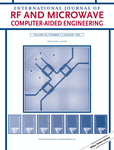Rapid design and size reduction of microwave couplers using variable-fidelity EM-driven optimization
ABSTRACT
In this article, fast electromagnetic (EM) simulation-driven design optimization of compact microwave couplers is addressed. The main focus is on explicit reduction of the circuit footprint. Our methodology relies on the penalty function approach, which allows us to minimize the circuit area while ensuring equal power split between the output ports and providing a sufficient bandwidth with respect to the return loss and isolation around the operating frequency. Computational efficiency of the design process is achieved by exploiting variable-fidelity EM simulations, local response surface approximation models, as well as suitable response correction techniques for design tuning. The technique described in this work is demonstrated using two examples of compact rat-race couplers. The size-reduction-oriented designs are compared with performance-oriented ones to illustrate available design trade-offs. Final design solutions of the former case illustrate ∼92% of miniaturization for both coupler examples (with corresponding fractional bandwidths of 16%). Alternative design solutions pertaining to the latter case show a lesser size reduction (∼90% for both examples), but present a much wider bandwidths (∼25% for both couplers). The overall computational cost of the design procedure corresponds to about 20 and 10 high-fidelity coupler simulations for the first and second design example, respectively. Numerical results are also validated experimentally. © 2015 Wiley Periodicals, Inc. Int J RF and Microwave CAE 26:27–35, 2016.




